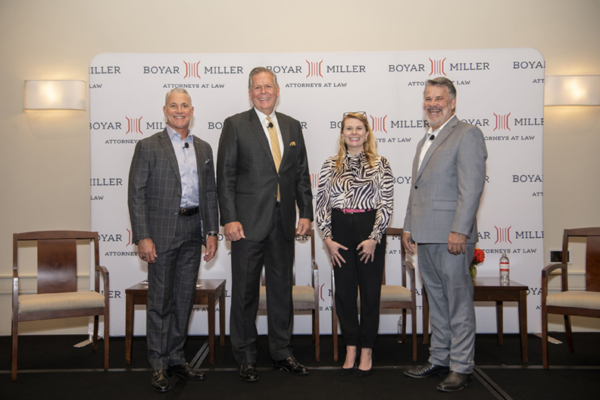With a deep understanding of your business alongside clear and honest communication, we help clients face challenges fearlessly.
Contact us today to learn more about our services and how we can help drive solutions.
Another Day, Another Interim Final Rule (or 4!)
May 19, 2020
Employees of Foreign Affiliates
Confusion regarding whether a borrower must count both foreign and domestic employees in its employee headcount for purposes of eligibility for a loan under the Paycheck Protection Program (“PPP”) arose in the first Interim Final Rule posted on April 2, 2020, which stated several times that a business is generally eligible for a PPP loan if it, combined with its foreign and domestic affiliates, has “500 or fewer employees whose principal place of residence is in the United States.” The Department of Treasury, in conjunction with the U.S. Small Business Administration (“SBA”), has clarified this issue in an Interim Final Rule posted on May 18, 2020, which indicates that borrowers must include employees of foreign affiliates in their calculation of the number of employees for the purpose of determining eligibility to receive a loan under the Paycheck Protection Program (“PPP”). In other words, a borrower must count all domestic and foreign employees of affiliates, and that number must be under 500 in order to be eligible to receive a PPP loan. Since many borrowers have already applied and received PPP loans prior to this clarification, the Interim Final Rule states that any borrower that applied for a PPP loan prior to May 5, 2020, will not be ineligible based on the borrower’s exclusion of foreign employees from its employee headcount, and these borrowers will not be deemed to have made an inaccurate certificate of eligibility solely on this basis. Notwithstanding the fact that foreign employees are counted in the employee headcount for purposes of eligibility for a PPP loan, the average monthly payroll costs and the maximum amount of a PPP loan are calculated using only the payroll of a borrower-paid to employees residing in the United States, and PPP loan proceeds may still only be disbursed to employees that reside in the United States.
Loan Increases for Partnerships and Seasonal Employers
In an Interim Final Rule posted on May 13, 2020, the SBA has provided guidance allowing lenders to increase the principal amount of a PPP loan approved for certain partnerships or seasonal employers whose PPP loans have already been approved. Prior to the guidance issued on April 14, 2020, and April 24, 2020, it was unclear how to calculate the maximum PPP loan amount for a partnership because we did not know whether to include partner compensation in that calculation; however, the SBA has since clarified that a partner in a partnership should not submit a separate PPP loan application, and instead, in the partnership’s calculation of the maximum PPP loan amount, the compensation of general active partners should be included as payroll costs, up to $100,000 annualized.
For seasonal employers, there was confusion on how to calculate the maximum PPP loan amount for certain summer seasonal businesses as the formula for the maximum loan amount was based on certain dates in which a summer seasonal employer may have only been partially operating or not operating at all. On April 28, 2020, the SBA posted guidance indicating that a seasonal employer may opt to calculate its maximum loan amount by utilizing any consecutive 12-week period between May 1, 2019, and September 15, 2019, and further, if the seasonal business was not operational as of February 15, 2020, it may still be eligible for a PPP loan as long as it was in operation for any 8-week period between May 1, 2019, and September 15, 2019.
Many borrowers applied for and received PPP loan proceeds before the SBA posted guidance on these issues for partnerships and seasonal employers, and as a result, such borrowers received far fewer funds than they may have otherwise been eligible. To remedy this issue, as long as the lender has not already submitted SBA Form 1502 or the date on which SBA Form 1502 is due has not passed (20 days after disbursement of PPP loan proceeds), the SBA is allowing lenders to increase the amount of a PPP loan to account for partner compensation and to account for the new criteria upon which a seasonal employer may base its maximum loan amount. Please remember that the maximum loan amount is still $10 million for an individual borrower and $20 million for a corporate group.
Student Workers
The Interim Final Rule posted on May 5, 2020, clarifies that student workers generally count as employees for eligibility and calculation of payroll costs purposes under the PPP unless the applicant is a higher education institution (as defined in the Department of Educations’ Federal Work-Study regulations, 34 675.2) and the student worker’s services are performed as part of a work-study program.
Electric Cooperatives
The Interim Final Rule posted on May 14, 2020, states that electric cooperatives that are exempt from federal income taxation under Section 501(c)(12) of the Internal Revenue Code are eligible to receive a PPP loan, as long as the other eligibility requirements under the PPP are met.




